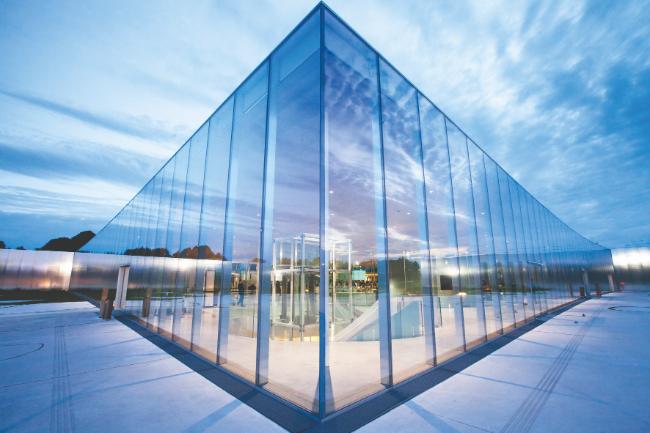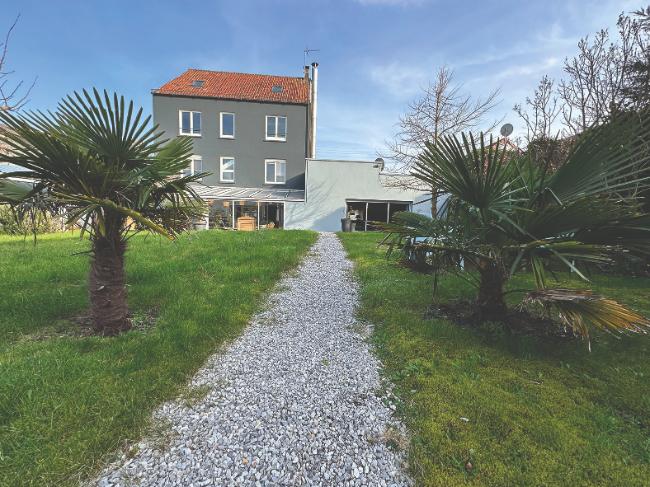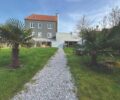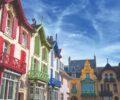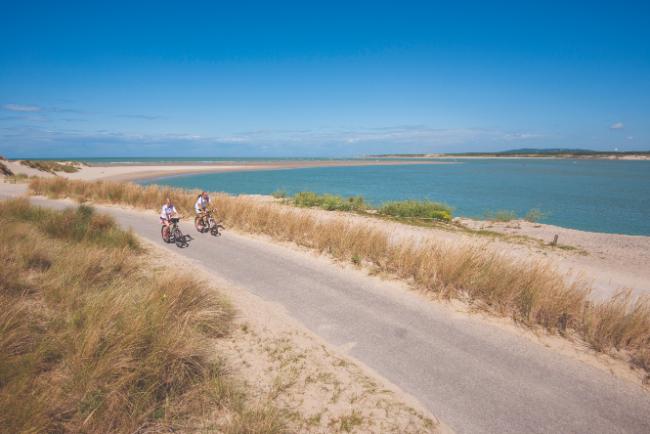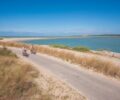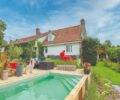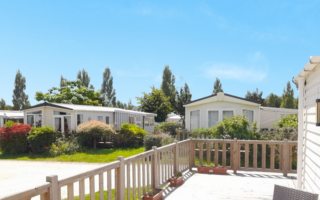French Property Location Guide: Pas-de-Calais
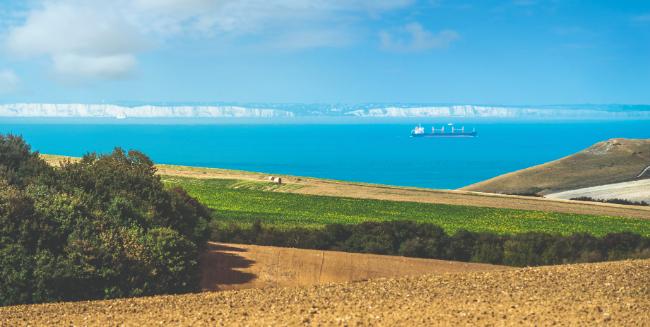
Alison Weeks explains why those looking to make the move to France need look no further than the beautiful Pas-de-Calais…
If it were but 300 miles further off, how the English would rave about it,” Charles Dickens once quipped about Boulogne-sur- Mer, his French home in the Pas-de-Calais. And the same could still be said about the area today. But with its wide, sandy beaches, historic towns and plentiful countryside, this northern department offers an authentic French experience within easy reach of the UK. Named after the Strait of Calais – the French term for the Dover Straight – the Pas-de- Calais also shares its name with the largest city in the department. Although British tourists often pass through the port on their way to more far-flung places, Calais is well worth a visit and a great option for those wanting to relocate to a city. The bustling centre ville offers a foodie paradise with fine fromageries, wine shops and chocolatiers, as well
as a wide range of excellent restaurants to choose from. Calais’ unique history makes it a particularly fitting place for British expats to settle. In the Middle Ages, the Pale of Calais fell under English rule for more than 200 years and was known as “the brightest jewel in the English crown”. It was a vital trading port for lead and tin, and a crucial foot on the Continent for England. Another British influx occurred in the 19th century when lacemakers from Nottingham smuggled an illegal lace-making machine into the country and set up shop in St-Pierre (a small village that was eventually incorporated into the city).
This led to an economic boom that would entice other Brits to move there. Although only a few lace-making companies remain, the delicate fabric is still made locally and you can learn all about its history at a dedicated museum, the Cité de la Dentelle.
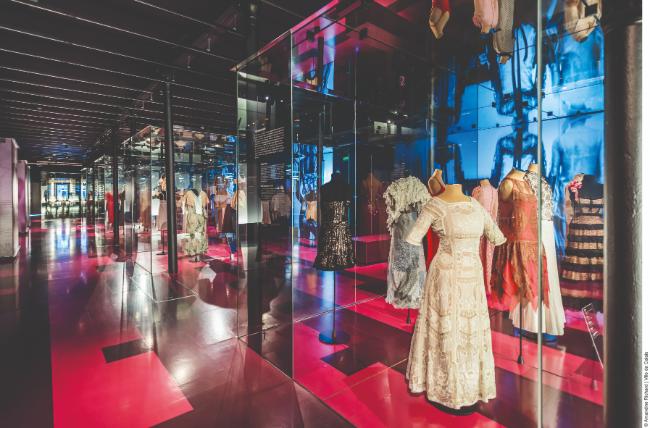
Calais’ Museum of Lace and Fashion is housed in an old 19th-century lace factory, © PAS DE CALAIS TOURIST BOARD
FLEMISH ROOTS
The capital of the department is Arras, the former capital of the Artois region, known for its picturesque squares and Baroque architecture. Once part of Flandres, Arras boasts a distinctly Flemish feel that has more in common with nearby Lille than other cities in the Pas-de-Calais. When it comes to dining, you’re more likely to find an estaminet than a brasserie here, with Flemish specialities such as carbonnade flamande and Welsh complet on the menu.
Every year at the end of November, the city centre becomes a winter wonderland with the annual marché de Noël, as the central Grand Place is filled with wooden chalets offering unique gifts, seasonal treats and plenty of vin chaud. Arras is also known for its towering belfry, a Unesco World Heritage site, as well as the Wellington Quarry, a series of underground tunnels carved out by Commonwealth soldiers in the First World War. More than 24,000 troops sheltered here in 1917 ahead of the bloody Battle of Arras.
Other Pas-de-Calais towns with Flemish histories include Lens, which is home to the Louvre-Lens, an offshoot of the Musée du Louvre, displaying collections on temporary or permanent loan from the iconic Parisian museum; and St-Omer, a popular market town between Arras and Calais, classed as an official Ville d’Art et d’Histoire, and home to an impressive Gothic cathedral and the ruins of a 9th-century Benedictine abbey.
COASTAL APPEAL
One of the highlights of the Pas-de-Calais is the stunning Opal Coast that stretches from Belgium to the Baie de Somme in Picardy. According to Virginie Bondois from Immouest Immobilière in Marquise, the many advantages of Pas-de-Calais’ coastline make it an excellent choice for those looking to make the move. “La Côte d’Opale offers both the sea and the countryside, as well as cultural and touristic attractions. It’s a great place to live and the locals are very welcoming.” Named for its unique, ever-changing light, the Opal Coast is synonymous with the stunning white cliffs of Cap Blanc-Nez, which mirror those across the Channel in Dover. But the closest point to England is actually further south at the Cap Gris-Nez, a protected area known for its Jurassic-era fossils. Nearby, the sprawling white sands of Wissant offer some of the best kite-surfing in France, and it’s also a popular destination for surfing.
Following the coast along to the south, you’ll soon come to charming Wimereux, the area’s oldest seaside resort. With its wealth of ornate and colourful seafront villas, it’s no surprise that the town is an attractive destination for househunters. During the Belle Époque, Wimereux became a fashionable place for moneyed Parisians and Lillois to own a second home. Today it’s popular with expats from both the UK and Belgium. It’s also seen as a northern suburb of Boulogne-sur-Mer, the department’s second largest city after Calais.
Boulogne is perhaps best known as the home of Nausicaa, the Centre National de la Mer, the largest aquarium in Europe and a major tourist attraction. The city is the busiest fishing port in France, particularly known for its herrings. The oily fish is celebrated every November with the fragrant Fête du Hareng, where you’ll find vendors serving it up in every way imaginable: smoked, grilled and even pickled – all to be enjoyed with a nice glass of timely Beaujolais Nouveau.
About 25 miles to the south of Boulogne lies Le Touquet, the most famous resort in northern France and the ‘jewel of the Côte d’Opale’. The town dates back to the mid 19th century, when a wealthy Parisian lawyer purchased the unspoilt triangle of land for his own holiday home. The cleverly named Paris-Plage development would soon attract other Parisian buyers looking to build a second home by the sea. Le Touquet was eventually purchased by Englishman Sir John Whitley, who officially transformed it into a resort in 1912. It became increasingly popular with Parisians as it was then only a three-hour train journey from the city, but soon attracted the British upper crust including the Duke of Windsor and Noël Coward. It is still a popular destination for day trippers looking to take in the sea air and enjoy some moules frites. Across the River Canche from Le Touquet, the idyllic fishing port of Étaples-sur- Mer seems a world away from its more touristy neighbour. Although its fishing industry is now surpassed by Bolougne’s, the town still maintains a rich maritime heritage and a busy fresh fish market.
Follow the river inland and you’ll soon come to the picturesque walled town of Montreuil-sur-Mer, which you may remember as the home of Jean Valjean in Victor Hugo’s Les Misérables. While visiting the town in 1837, Hugo is said to have encountered a young maid named Cosette and witnessed a carriage accident that would inspire one of the pivotal scenes in the novel. Hugo was also reportedly disappointed to discover that the town was not by the sea as the estuary was silted up. Despite its misleading name, Montreuil is one of the prettiest villages in the Pas-de-Calais and a lovely place to live.
BUCOLIC BEAUTY
Further upstream, the River Canche and its tributaries flow through an area known as the Sept Vallées (Seven Valleys), a verdant expanse of rolling hills dotted with picturesque villages and small châteaux. According to estate agent Brenda Leblond of Leggett Immobilier, this is the most sought-after area in the Pas-de-Calais. “I see the most activity around Hesdin, or within a 15-minute drive.” A small, quintessentially French town, surrounded by unspoilt countryside, it’s not surprising that Hesdin is a popular choice. Originally from the US, Brenda has experienced first-hand the charming pull of the department. “There is a rich history that spans the ages. No matter where you are in the Pas-de-Calais, the beaches of the Côte d’Opale are a reasonable drive away and we have major cities, like Arras, with good transport links.”
It’s also a quick trip back to the UK and not far from Paris (the TGV from Calais takes just over 2.5 hours, while it’s around an hour from Arras). Expats who settle here can have the best of both worlds. They can easily visit friends and family back home, but live fully immersed in French savoir vivre, cuisine and culture. Not to mention the affordable properties. According to Brenda, the average price for a three-bedroom house is around €250,000.
Lead photo credit : Photo: Shutterstock
Share to: Facebook Twitter LinkedIn Email
More in french property, Hauts-de-France, Location guide, pas-de-calais
By Alison Weeks
Leave a reply
Your email address will not be published. Required fields are marked *

